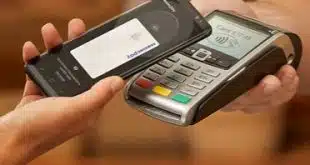French chipmaker Inside Contactless this week announced it has shipped more than 50 million MicroPass chips for contactless payments since introducing the product in November 2005. And, though the company used the occasion to promote its optimism about contactless payments in North America particularly, a number of observers remain skeptical about the technology, which uses radio waves to allow consumers to tap or wave, rather than swipe, a card to make a payment. “We expect continued strong growth in the North American contactless payments market in 2008, with more than 25 active issuance programs and value propositions to consumers, issuers, and merchants demonstrated,” said Charles Walton, executive vice president of payments for Inside, in a statement. Walton went on to say the company expects contactless adoption to achieve a “tipping point” in the U.S. and Canada in 2009. Lending credence to this bullish prediction is Washington Mutual Bank's decision, announced in April, to issue between 12 million and 15 million contactless debit cards by the end of the year, a move that would allow the bank to surpass JPMorgan Chase & Co. as the nation's biggest issuer of contactless cards. But experts point out that consumer adoption remains an unanswered question about contactless technology. Though U.S. banks have over the past three years issued almost 25 million credit and signature-debit cards with contactless functionality, some observers contend actual usage is very low. “We're not able to find anybody who's really using this at all,” says James Van Dyke, founder and principal of Javelin Strategy & Research, Pleasanton, Calif. Both Visa Inc. and MasterCard Worldwide, which run the payWave and PayPass contactless platforms, have refused to release usage numbers. Observers who follow the contactless market blame a number of factors for anemic consumer usage, including spotty marketing and the fact that merchant acceptance is far from universal. Nick Holland, a senior analyst at the Aite Group LLC, a Boston-based research firm, estimates about 55,000 merchants are now equipped to accept contactless cards. He includes some 10,000 New York City taxicabs in his estimate. As for marketing and consumer education, some merchant clerks have encouraged card swipes instead of waves or taps. “You'll find some merchants talking you out of using it,” says Van Dyke, Javelin's strategy, which the firm proposed in a recent report, calls for Visa and MasterCard to open their contactless platforms to proprietary and gift cards issued by merchants. The firm argues this move would allow merchants to justify the expense of installing contactless readers because their own cards would be equipped with the technology. The bank card networks tout speedier transactions and higher average tickets among benefits of contactless technology. The inclusion of merchant-issued cards would also make them eligible to be stored in mobile wallets, Javelin argues, as handsets become equipped with near-field communication (NFC), an interactive technology that turns mobile phones into contactless-payment devices. That move would allow consumers to carry proprietary card accounts without having to carry the actual plastic. Javelin points out that a common reason consumers pass on proprietary cards is that they don't want to make room in their already-stuffed wallets for cards with limited utility. “Now we're changing the whole picture” for contactless, Van Dyke argues, if proprietary and gift cards are included in network contactless platforms. Holland agrees that increased merchant adoption is necessary to drive consumer usage. His solution is a temporary, lower interchange rate for contactless transactions (Digital Transactions News, Feb. 4, 2008), which he says would encourage merchants to deploy readers while the actual base of contactless cards builds up. He sees merit in the idea of allowing proprietary cards to run on contactless networks, but argues the benefit to merchants?particularly with respect to mobile wallets?may be too far off. “The difficulty is in selling the future benefit,” he says. “It's got to be more of an instant impact as far as merchants are concerned.”
Check Also
ICBA Payments’ Mastercard Move and other Digital Transactions News briefs from 3/17/25
The Independent Community Bankers of America said its ICBA Payments subsidiary is working with Mastercard Inc. to …


